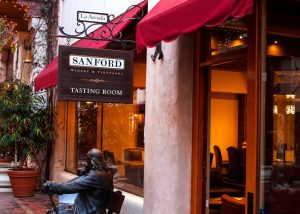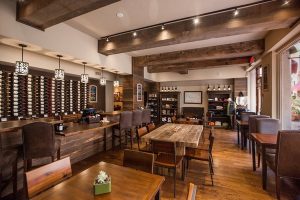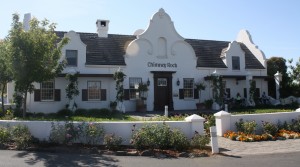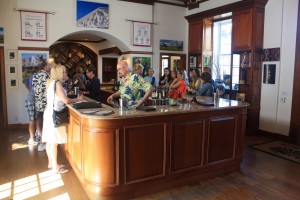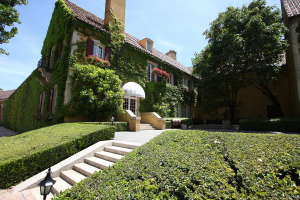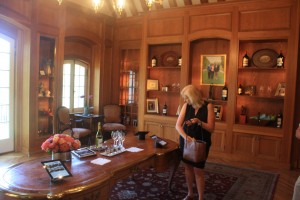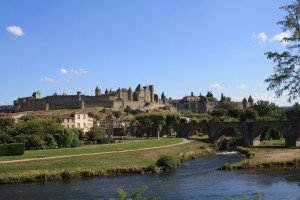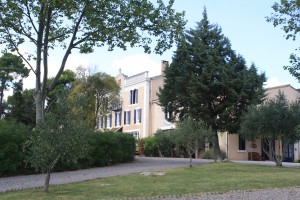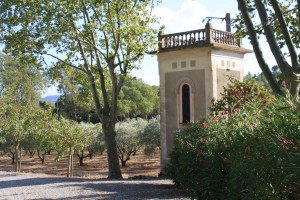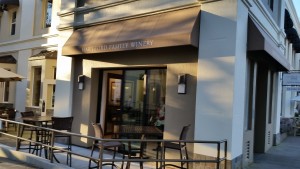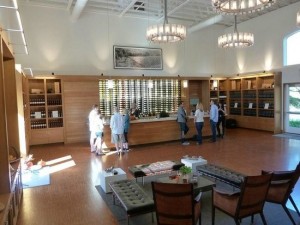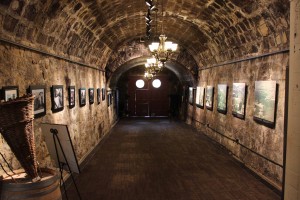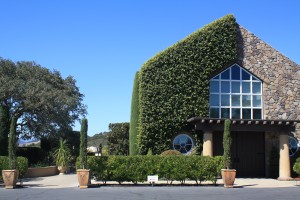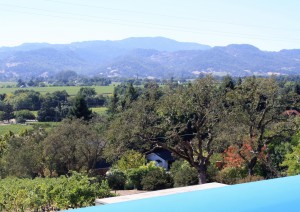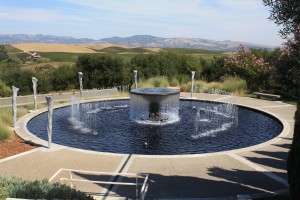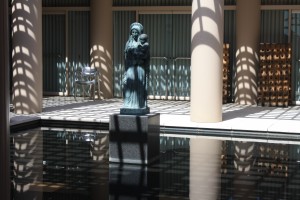Sanford Winery (http://www.sanfordwinery.com/) makes Burgundian wines – Chardonnay and Pinot Noir – in Santa Barbara County’s famed Santa Rita Hills. Sanford has a tasting room in the Santa Rita Hills that we haven’t visited and also one in the city of Santa Barbara, which we have. Sanford is a Terlato property, the same as Chimney Rock in the Napa Valley. That fact alone is evidence of high quality wines and knowledgeable servers. Santa Barbara’s wine tasting scene is a bit schizophrenic, with a wild party atmosphere in the so-called Funk Zone downtown near the ocean and more refined tasting rooms uptown in or near the classy shopping district on State Street. Needless to say, Sanford is uptown.
Some in-town tasting rooms are strictly commercial. Others project a feeling of being in a nice club room. Still others try to incorporate the atmosphere of the town they are in into the tasting room. Sanford is a bar, a very classy bar to be sure, but all the same, a bar. It has a polished wooden floor, some large and small tables and a bar with some high stools. There’s no standing tastings at Sanford.
Photo courtesy of Winery Explorers (http://wineryexplorers.com/)
It’s in a shopping center. Again, it’s an up-scale shopping center with restaurants and shops full of beautiful things, but it’s a shopping center and it affects the wine tasting experience at Sanford. The wines, which are first-rate, become another expensive luxury item. Okay, all wine is an expensive luxury, but it doesn’t need to feel that way. So when you visit Sanford, and we hope you do, keep the door at your back.
Photo courtesy of Sanford Winery
What you will get when you go to Sanford is, in ascending order, a lesson in their wines, their Sanford & Benedict vineyard and winemaking in the Santa Rita Hills. All of this is accompanied by quite a broad range of wines for you to sample. Some of the wines Sanford produces are breathtakingly expensive; in all likelihood you won’t get a chance to taste those. But the ones that are available to taste give an excellent perspective of what the Santa Rita Hills is capable of and what American Pinot Noirs ought to be.
In some ways, the best part of tasting in Sanford’s Santa Barbara location is that you get to sip these wines without the necessity of an hour or more of driving to Lompoc, where Sanford is based. In fact, that case could be made for tasting wines in the city of Santa Barbara rather than trying to take in all the wineries in the rather vast county of Santa Barbara. Many other top-end wineries have realized that and have opened tasting rooms in-town.
The wine-tasting experience at Sanford Santa Barbara is a bit unusual but definitely worthwhile. The same may be said of visiting Santa Barbara itself, to be addressed in a future Places to Visit article.
